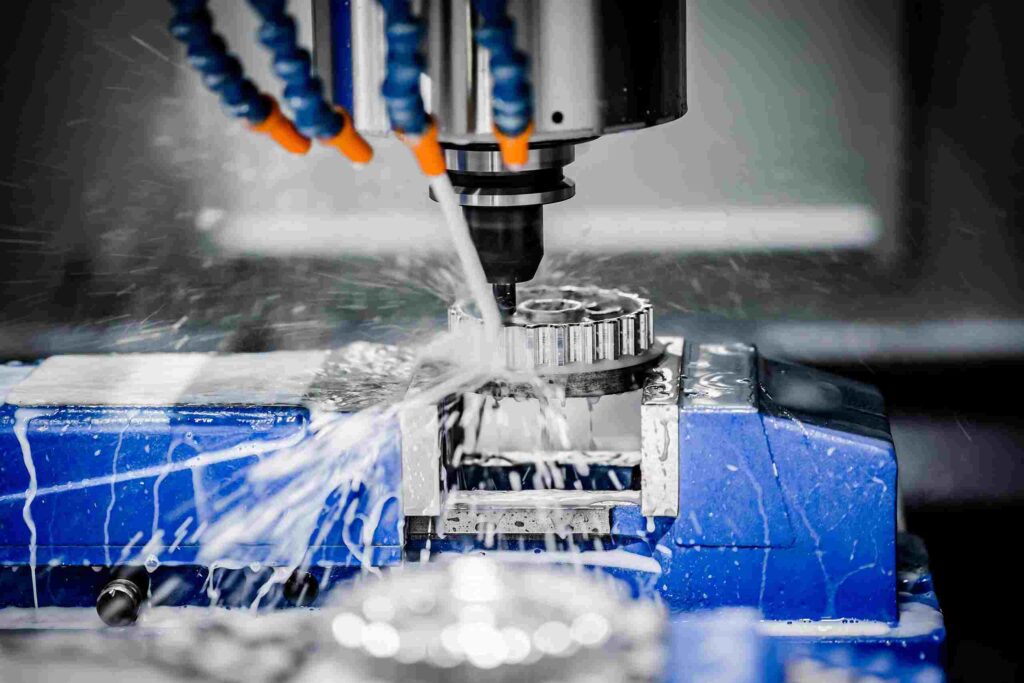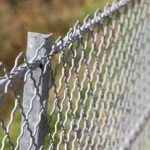CNC (Computer Numerical Control) machining has transformed the manufacturing industry by providing exceptional precision and consistency. With ongoing technological advancements, the need for quicker production times without sacrificing quality has become increasingly crucial. Speeding up CNC machining processes can lead to significant improvements in productivity, cost-efficiency, and overall competitiveness. This article delves into the top techniques that can accelerate CNC machining operations, ensuring you stay ahead in the fast-paced world of manufacturing. From optimising tool paths and leveraging high-speed machining to integrating automation and refining cutting parameters, these strategies will help you achieve higher efficiency and superior performance in your CNC machining processes.
Explore Top Techniques to Enhance CNC Machining Speed Without Compromising Quality
In the manufacturing industry, CNC (Computer Numerical Control) machining is fundamental for producing precise and high-quality parts. However, as the demand for faster production times grows, manufacturers are challenged to increase speed without compromising the renowned quality of CNC machining. This article aims to address this critical balance, exploring top techniques to enhance CNC machining speed while maintaining the integrity and excellence of the final product.
Technique 1: Optimise Tool Path
Tool path optimisation is the process of refining the route that the cutting tool follows to remove material from a workpiece. The aim is to minimise the tool’s travel distance, reduce the frequency of tool changes, and streamline the entire machining process. By optimising the tool path, manufacturers can achieve faster production times, improve efficiency, and maintain high precision in the final product.
Benefits of Minimising Unnecessary Movements
Minimising unnecessary movements in the tool path offers several key benefits:
- Reduced Machining Time: By eliminating superfluous movements, the tool spends less time in non-productive travel, which directly reduces the overall cycle time of the machining process.
- Lower Tool Wear: Efficient tool paths minimise rapid movements and sudden changes in direction, thereby reducing wear and tear on the cutting tool and extending its lifespan.
- Improved Surface Finish: A well-optimised tool path ensures smoother transitions and consistent cutting conditions, resulting in a better surface finish on the machined part.
- Enhanced Precision: Reducing unnecessary movements decreases the chances of errors and deviations, leading to higher accuracy and precision in the final product.
- Energy Efficiency: Shorter, more efficient tool paths consume less energy, contributing to a more sustainable machining process.
Technique 2: High-Speed Machining (HSM)
High-Speed Machining (HSM) is a machining process that uses higher spindle speeds and feed rates than conventional machining. The primary goal of HSM is to increase the material removal rate (MRR) while maintaining or even enhancing the quality of the machined surface. The principles of HSM revolve around maintaining a consistent and optimal cutting force, reducing heat generation, and utilising advanced cutting tool materials and geometries.
Advantages of HSM in Terms of Speed and Precision
High-Speed Machining offers several advantages, particularly in terms of speed and precision:
- Increased Productivity: HSM significantly reduces cycle times, allowing for faster production and higher throughput. This is especially advantageous in industries where time-to-market is crucial.
- Improved Surface Finish: The use of high spindle speeds and shallow depths of cut results in finer surface finishes, reducing the need for secondary finishing operations.
- Reduced Heat Generation: By using shallow cuts and maintaining high cutting speeds, HSM reduces the amount of heat generated during machining, which can prolong tool life and improve part quality.
- Greater Accuracy: The consistent cutting forces and reduced tool deflection associated with HSM lead to higher dimensional accuracy and tighter tolerances.
- Extended Tool Life: Advanced cutting tools used in HSM are designed to withstand the rigours of high-speed operations, resulting in longer tool life and reduced tool changeovers.
Technique 3: Use of Advanced Cutting Tools
Advanced cutting tool technologies have revolutionised CNC machining, enabling higher speeds, greater precision, and improved efficiency. The key advancements include:
- Carbide Tools: Carbide cutting tools are known for their hardness and ability to retain sharpness at high temperatures. They are ideal for high-speed machining and provide excellent wear resistance and longer tool life compared to traditional high-speed steel (HSS) tools.
- Coated Tools: Coatings such as Titanium Nitride (TiN), Titanium Carbonitride (TiCN), and Diamond-like Carbon (DLC) enhance the performance of cutting tools by reducing friction, increasing hardness, and improving heat resistance. Coated tools can operate at higher speeds and feeds, extending tool life and enhancing surface finish.
- Ceramic Tools: Ceramic cutting tools offer extreme hardness and thermal stability, making them suitable for high-speed machining of hard materials like hardened steels and superalloys. They are particularly effective in applications where high cutting temperatures are encountered.
- Polycrystalline Diamond (PCD) and Cubic Boron Nitride (CBN) Tools: PCD tools are ideal for machining non-ferrous materials like aluminium, brass, and plastics, while CBN tools are used for hard materials such as hardened steels and cast iron. These tools provide exceptional wear resistance and longevity.
Impact of Cutting Tool Materials and Geometries on Machining Speed
The material and geometry of cutting tools have a significant impact on machining speed and overall performance:
- Tool Material: The hardness, toughness, and heat resistance of the cutting tool material determine how fast it can cut without degrading. Advanced materials like carbide, ceramics, and CBN allow for higher cutting speeds and feeds, reducing cycle times and increasing productivity.
- Tool Geometry: The design of the cutting tool, including the rake angle, relief angle, and cutting edge geometry, influences chip formation, cutting forces, and heat generation. Optimised geometries reduce cutting forces, improve chip evacuation, and enable higher machining speeds while maintaining surface quality.
- Coatings: Tool coatings reduce friction and heat generation, allowing for higher cutting speeds and extended tool life. They also prevent built-up edge formation, which can degrade surface finish and tool performance.
Technique 4: Implementing Multi-Axis Machining
Multi-axis CNC machining is a sophisticated manufacturing process that involves using computer-controlled tools to move and machine parts along multiple axes simultaneously. Unlike traditional 3-axis CNC machining, which operates along the X, Y, and Z axes, multi-axis machining can include additional rotational axes, enabling more complex geometries and intricate parts to be produced with high precision and efficiency. This advanced method leverages the flexibility and capability of various CNC machining modes to handle complex designs and reduce production times.
Benefits of Multi-Axis Machining in Reducing Setup Times and Increasing Efficiency
Implementing multi-axis machining offers numerous benefits that enhance both efficiency and productivity:
- Reduced Setup Times: Multi-axis machines can reach multiple sides of a part without repositioning, greatly reducing the number of setups needed. This leads to less downtime and faster production cycles, as parts can be completed in a single setup.
- Increased Efficiency: The ability to machine complex parts in one go improves workflow efficiency. Multi-axis machines can perform multiple operations simultaneously, such as drilling, milling, and turning, which streamlines the machining process and reduces overall production time.
- Improved Accuracy and Precision: By minimising the need for multiple setups, multi-axis machining reduces the chances of human error and misalignment. This leads to greater precision and consistency in the final product, ensuring that tight tolerances are achieved.
- Enhanced Surface Finish: The continuous movement and optimal tool angles available in multi-axis machining lead to better surface finishes. This reduces the need for additional finishing operations, saving time and cost.
- Flexibility and Capability: Multi-axis machines can handle a wider range of complex geometries and intricate designs. This flexibility allows manufacturers to take on more diverse projects and meet the demands of various industries.
Technique 5: Reducing Machine Downtime
In CNC machining, machine downtime refers to periods when machines are not operational due to maintenance, breakdowns, or setup changes. Minimising downtime is crucial for several reasons:
- Increased Productivity: Reducing downtime ensures that machines are running more consistently, leading to higher production rates and better utilisation of resources.
- Cost Efficiency: Downtime can be expensive, with costs associated not only with idle machinery but also with delayed orders, overtime labour, and potentially missed deadlines.
- Enhanced Competitiveness: Companies that reduce downtime can provide quicker turnaround times and more reliable delivery schedules, giving them a competitive advantage in the market.
- Maximised Equipment Lifespan: Properly maintained machines experience fewer breakdowns and operate more efficiently, extending their useful life and protecting the investment.
Technique 6: Enhancing CAM Software Capabilities
The field of Computer-Aided Manufacturing (CAM) software is continually evolving, with new advancements providing significant improvements in machining efficiency and precision. These advancements include enhanced simulation capabilities, intelligent tool path generation, integrated design and manufacturing workflows, and cloud-based solutions. These innovations allow manufacturers to leverage cutting-edge technology to optimise their CNC machining processes.
How Advanced CAM Features Can Streamline Machining Processes
Advanced CAM software offers a variety of features that streamline machining processes and boost productivity:
- Intelligent Tool Path Generation: Modern CAM software can automatically generate optimised tool paths that minimise machine movements and reduce machining time. Features such as adaptive clearing and high-efficiency milling ensure consistent material removal rates and improved cutting efficiency.
- Advanced Simulation and Verification: CAM software now features advanced simulation tools that enable users to visualise and verify machining operations before execution. This helps detect potential collisions, tool deflections, and other issues, preventing costly errors and rework.
- Integrated Design and Manufacturing: Advanced CAM solutions often integrate seamlessly with CAD (Computer-Aided Design) software, enabling a smooth transition from design to manufacturing. This integration reduces data translation errors and ensures that design intent is accurately captured in the machining process.
- Cloud-Based Solutions: Cloud-based CAM software provides flexibility and scalability, allowing teams to collaborate in real-time and access powerful computational resources. This can significantly speed up the programming process and enhance workflow efficiency.
Technique 7: Optimising Cutting Parameters
Cutting parameters are essential variables in CNC machining that directly influence the efficiency and quality of the process. The key cutting parameters include:
- Feed Rate: The rate at which the cutting tool moves through the material is typically measured in inches per minute (IPM) or millimetres per minute (mm/min).
- Spindle Speed: The spindle’s rotational speed, measured in revolutions per minute (RPM). This determines how fast the cutting tool rotates.
- Depth of Cut: The thickness of the material layer being removed in a single pass, measured in inches or millimetres.
How Optimising These Parameters Can Speed Up Machining Processes
Optimising cutting parameters can significantly enhance machining speed and overall efficiency:
- Increased Material Removal Rate (MRR): By enhancing feed rate, spindle speed, and cutting depth, the material removal rate can be maximised, reducing the time needed to complete a job.
- Reduced Tool Wear: Properly optimised parameters ensure that the cutting tool is used within its optimal operating conditions, extending its life and reducing the frequency of tool changes.
- Improved Surface Finish: Optimised cutting conditions can lead to a better surface finish, reducing the need for additional finishing processes and saving time.
- Enhanced Process Stability: Ensuring the right balance between cutting parameters minimises vibrations and tool deflection, leading to more stable and predictable machining operations.
Technique 8: Integrating Automation and Robotics
Automation and robotics have become vital components of modern CNC machining, revolutionising the execution of manufacturing processes. These technologies automate repetitive and time-consuming tasks, enabling machines to operate continuously with minimal human intervention. From robotic arms to fully automated production lines, the integration of automation in CNC manufacturing enhances productivity, consistency, and precision.
Benefits of Integrating Automation for Increasing Speed and Efficiency
- Increased Throughput: Automation enables machines to run continuously, significantly increasing the volume of parts produced within a given time frame. This leads to higher throughput and faster production cycles.
- Reduced Downtime: Automated systems can quickly perform tasks such as tool changes, part loading, and unloading, minimising machine idle time and maximising operational efficiency.
- Enhanced Precision and Consistency: Robotic systems execute tasks with high accuracy and repeatability, ensuring consistent quality across all manufactured parts. This minimises the likelihood of errors and the need for rework.
- Labour Cost Savings: Automation reduces the need for manual labour in repetitive and hazardous tasks, lowering labour costs and allowing skilled workers to focus on more complex and value-added activities.
- Improved Safety: By automating hazardous tasks, robotics enhance workplace safety and reduce the risk of injuries and accidents.
Speeding up CNC machining processes is achievable through a combination of optimised tool paths, high-speed machining, advanced cutting tools, multi-axis machining, reduced downtime, enhanced CAM software, optimised cutting parameters, and automation. By implementing these techniques, manufacturers can achieve faster production times, improve efficiency, and maintain high-quality standards. Continual evaluation and improvement of these processes are essential to maintaining competitiveness in the manufacturing industry. Embrace these techniques to maximise your CNC machining potential and drive productivity forward.






